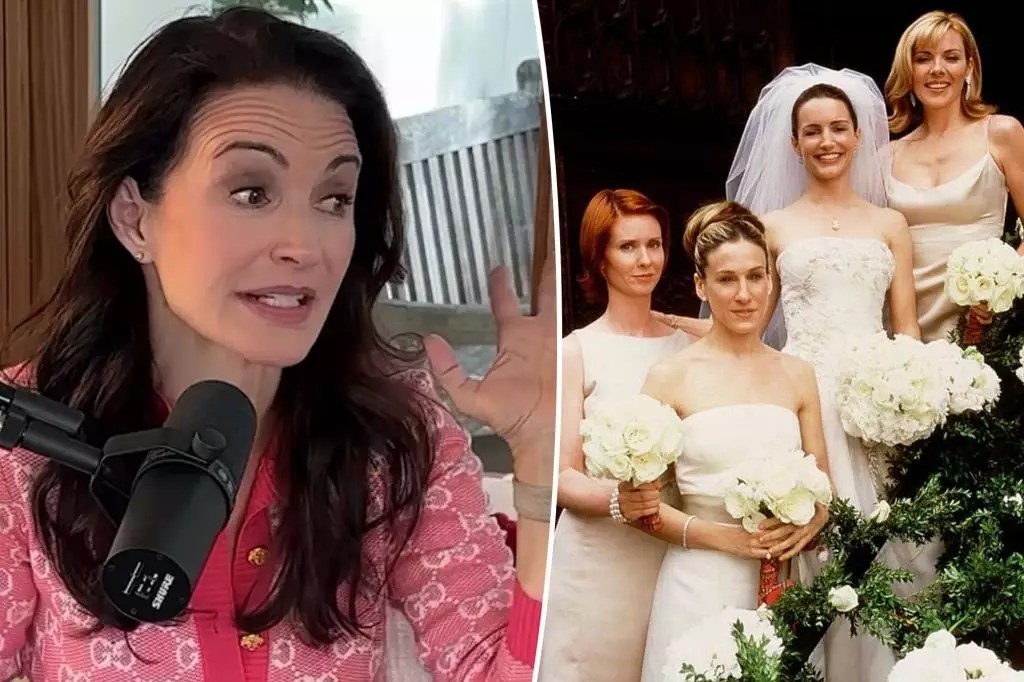The world of fashion often intersects dramatically with the world of television, and “Sex and the City” is a prime example of how wardrobe choices can spark unexpected controversies. Recently, Kristin Davis, who portrayed the ever-optimistic Charlotte York, shed light on a long-standing feud with her co-star Sarah Jessica Parker that stemmed from a wardrobe decision during Charlotte’s wedding episode in Season 3. This revelation not only brings to light the pressures of on-set dynamics but also highlights how personal preferences can lead to professional disagreements, even among seasoned actors.
Setting the Scene: A Wedding with Historical Layers
The episode in question showcases Charlotte’s wedding to Trey MacDougal, an event laden with both emotional significance and sartorial splendor. While one might assume that the wedding garb of the bridesmaids—particularly the beige Vera Wang dresses—would evoke nothing but bridal bliss, it apparently was the source of considerable tension. Davis divulged that Parker, known for her role as the fashion-forward Carrie Bradshaw, was deeply unhappy with the color choice, viewing it as a misalignment with her character’s vibrant personality. Davis’s comments suggest that Parker’s discontent may have lingered, reflecting a deeper conflict over creative choices that often accompanies a high-profile series.
As with any production, actors are not just performers but also individuals with personal tastes that can sometimes clash with the demands of a role. This particular disagreement seems to have escalated to a notable extent. According to Davis, Parker took matters into her own hands, modifying the original dress in an effort to align it more closely with her vision. Artistry met absurdity, as showrunner Michael Patrick King recounted a scene that involved Parker reimagining the dress by incorporating tartan, perhaps as a nod to Trey’s kilt. This move may have been viewed as a creative rebellion, but it also raises questions about the pressures faced by actors to project a certain image, even when the character’s narrative directly contradicts their personal style.
Davis’s further remarks reflect a camaraderie that exists amid these conflicts. Despite the awkwardness surrounding the situation, she provides insights into Parker’s thought process during this fashion feud. When Parker approached Davis to express her confusion about the beige dress, it was met with a straightforward, if somewhat supportive, rebuttal from Davis—a reminder that in the world of “Sex and the City,” character consistency often trumps personal preference. What stands out in their interaction is the blend of professionalism and friendship that characterizes their relationship, showing that even while disagreements occur, mutual respect can help ease tensions.
Interestingly, the conversation revealed a contrast in wardrobe philosophy during another pivotal wedding scene—the marriage of Carrie and Big. Davis pointed out that, unlike Charlotte’s wedding, the bridesmaids in Carrie’s nuptials did not opt for coordinated dresses, favoring instead a diversity of styles that mirrored each character’s unique essence. This shift in fashion choice can be viewed as a reflection of each character’s personal evolution throughout the series. The focus on individuality in the later wedding scene, highlighted by Davis’s own stunning black Zac Posen gown, emphasizes how fashion can underscore character development.
The Lasting Impact of Fashion on Television
The wardrobe disputes and the comedic yet heartfelt interactions behind the scenes of “Sex and the City” serve as a fascinating lens through which to examine both the pressures of the television industry and the enduring impact of fashion on storytelling. The outfits worn by characters do more than serve aesthetic purposes; they act as symbols of character development and interpersonal relationships. Ultimately, the saga of the bridesmaid dresses—particularly the infamous beige—illustrates that wardrobe choices can indeed shape the narrative in profound ways.
As this story unfolds, it serves as a reminder that every ensemble has a story, often richer than what appears on screen. In the ever-intertwined world of fashion and television, what seems like a mere wardrobe choice might reveal deeper narratives of tension, creativity, and the complexities of relationships both on and off the camera.







Leave a Reply